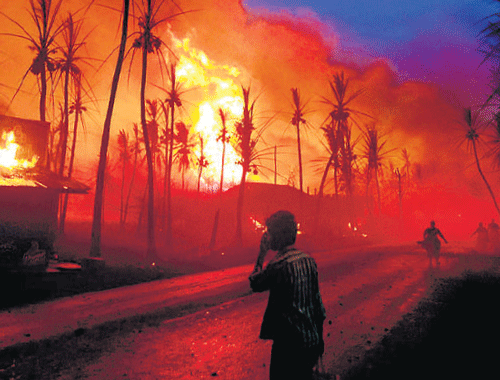
The leakage leading to explosion of the Gas Authority of India Limited’s (Gail) natural gas pipeline at Nagaram village at Mamidikuduru in East Godavari district is an unfortunate incident which should never have happened. The fire killed 21 people on June 27 bringing to the fore pipeline safety issues.
Amongst the pipelines that carry fuel, there are pipelines for crude oil, gas pipeline and so on. The pipeline for crude oil, one can say, is relatively safe. They do not catch fire as easily as natural gas or an LPG, petrol or naphtha pipeline. But there are standard safety protocols on how the pipelines should work, what is the prescribed period they should work for and how the suspected leaks can be taken care of. Going by media reports, I believe that some villagers had reported that there was a leakage, and in spite of that the authorities did not act. So if that is true, it is a serious lapse. An inquiry committee has been set up and it has to establish the cause of leakage.
As for the question if Gail has really adhered to the safety guidelines, this has to be examined. Gail may have adhered to the norms but somebody may have externally interfered in it. Some one may have even accidentally damaged it from outside. But it has to be established only by the probe panel.
However, some experts are pointing finger to internal corrosion. Internal corrosion may also be there. But internal corrosion cannot cause an accident. There are levels of corrosion. It is a continuous process. That is why one makes regular inspection of the pipelines and sees what the damage is and takes corrective measures. There is a case that Gail pipelines are ageing. It may be one of the reasons but if you keep up with regular maintenance, ageing should not pose a threat.
As for one report in which Gail has stated that international quality check has been done on their pipeline by a renowned US company called TD Williamson which said audit was conducted in 2010 and the next inspection was due in after 10 years, I would like to say safety audit is a must to see if there was any external corrosion in the pipeline due to outside interference which could happen through people living in the vicinity.
Regarding speculation that there was some amount of impurity in the gas supplied by ONGC (Oil and Natural Gas Commission) to that particular pipeline which could have caused internal corrosion, I would like to say we cannot say anything until the probe report comes out. But that is why fortunately you have what I had recommended after the Bombay High North (BHN) platform fire accident at Mumbai offshore about safety directives. I had emphasised on safety overview by an outside agency. There is no point in each organisation having its own internal safety audits.
We should have an outside safety audit. In the 2005 BHN inquiry which I headed, I had recommended that the whole safety issue should be outside the realm of the handling company, audit must be done by an outside agency and that it should be made statutory. I don’t think the government acted on any of my recommendations. In another report I had pitched for statutory safety norms. But such a regulatory authority has not been set up.
Safety audits
Not only pipeline, safety regulator should be there in all sectors. All should be done by outside agencies. So these outside bodies can do periodic inspections. I don’t think any pipeline can be left alone or unattended to for 10 years. What we have now is under the government and is not a statutory body. Now, in India, no body is held responsible for an accident because there are no stringent laws to make people accountable. If strict laws are there, the number of accidents will automatically come down.
The AP fire happened amid human population. It is not possible to lay the pipelines avoiding human habitations. So, we have something called Cathodic protection system (a technique used to control the corrosion of a metal surface) in the pipelines. It protects a wide range of metallic structures in various environments - if there is an interference with the pipeline, it sends electronic messages. Hazardous product pipelines are routinely protected by a coating supplemented with cathodic protection.
(TNR Rao, former petroleum and natural gas secretary in the Government of India and founder chairman of University of Petroleum and Energy Studies, Dehradun, headed an inquiry on Bombay High North platform fire accident on Mumbai offshore in 2005. In his report, he recommended far-reaching changes in safety norms in oil and gas industry in order to avoid accidents and suggested that safety regulations be made statutory. But the government never made his report public. Nearly 10 years after that incident, India still does not have statutory safety authority in place. The recent tragedy has once again shifted the focus on safety aspect of hazardous product pipelines.)
As told Annapurna Singh of Deccan Herald
Related Articles
Konaseema: The lost heaven
Evaluation must for pipeline health